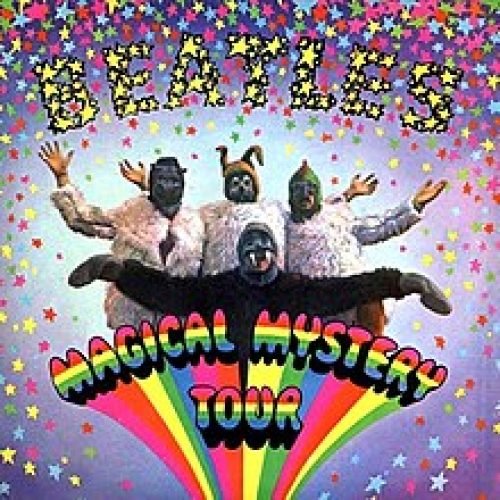“Magical Mystery Tour,” an odyssey into the depths of psychedelic rock and pop, marks a distinctive point of both continuation and departure within The Beatles‘ illustrious discography. Released in 1967, amidst a tumultuous yet groundbreaking era for music, this album not only deepens the experimental ventures begun with “Revolver” and “Sgt. Pepper’s Lonely Hearts Club Band” but also diverges to explore uncharted territories of sound and narrative.
In the wake of the revolutionary “Sgt. Pepper’s,” an album that reshaped the contours of popular music, “Magical Mystery Tour” was initially conceived as the soundtrack to its eponymous television film. This project was imbued with the Beatles’ growing fascination with the avant-garde, a shared spirit of spontaneity, and an intent to meld visual and auditory storytelling into a singular, immersive experience. It is this blend of ambitious artistic vision with their innate pop sensibilities that defines the album’s essence.
Artistic Intentions
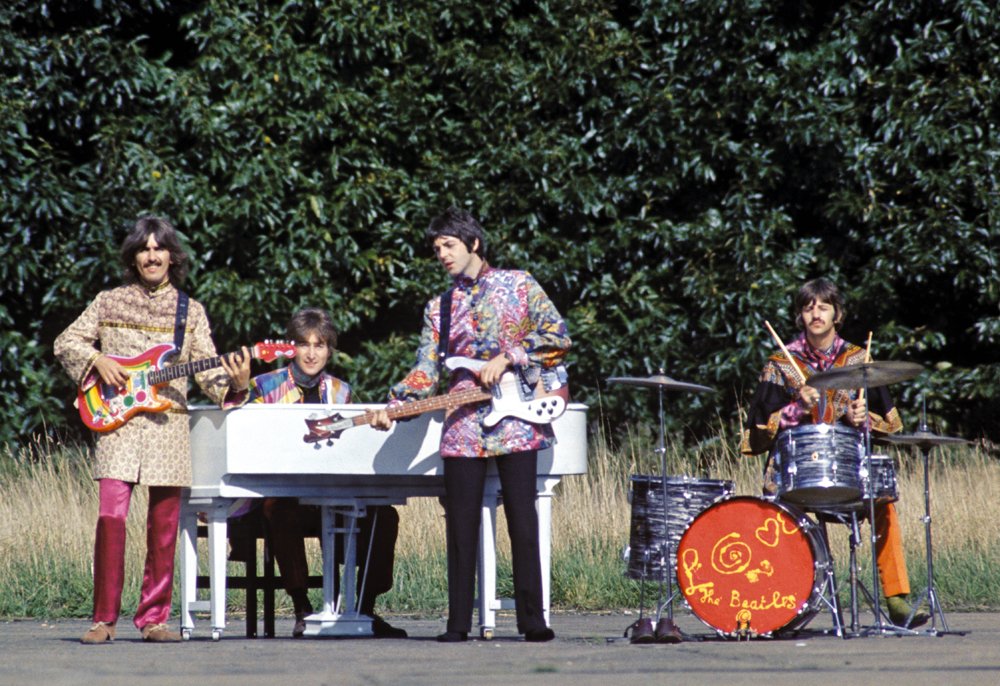
The Beatles, having ceased touring and retreated from the public eye, found in “Magical Mystery Tour” a canvas to further their exploration of psychedelic experiences, Eastern spirituality, and the burgeoning counterculture movement. The artistic intentions behind the album, as gleaned from various interviews and reflections from the band members, were manifold. Paul McCartney, in particular, envisioned the album as a magical bus journey through the countryside, inviting listeners to join The Beatles in an escape from reality, if only for a short while. This vision was not merely about creating an auditory experience but rather an invitation to partake in a broader sensory and conceptual adventure.
It was like we were in another phase of our career you know we’d done all the live stuff and that was marvellous, now we were into being more artists. We got more freedom to be artists.
Paul McCartney on the Magical Mystery Tour.
Through “Magical Mystery Tour,” The Beatles aimed to extend the boundaries of what music could convey, incorporating a wide array of instruments, innovative studio techniques, and narrative depth that was uncommon in popular music at the time. It was a bold foray into making the album as an art form in itself, a cohesive piece that was more than the sum of its parts. The Beatles were not just making music; they were crafting an experience, a journey into the heart of the late ’60s psyche, that sought to challenge, delight, and inspire their audience.
Sonic Exploration
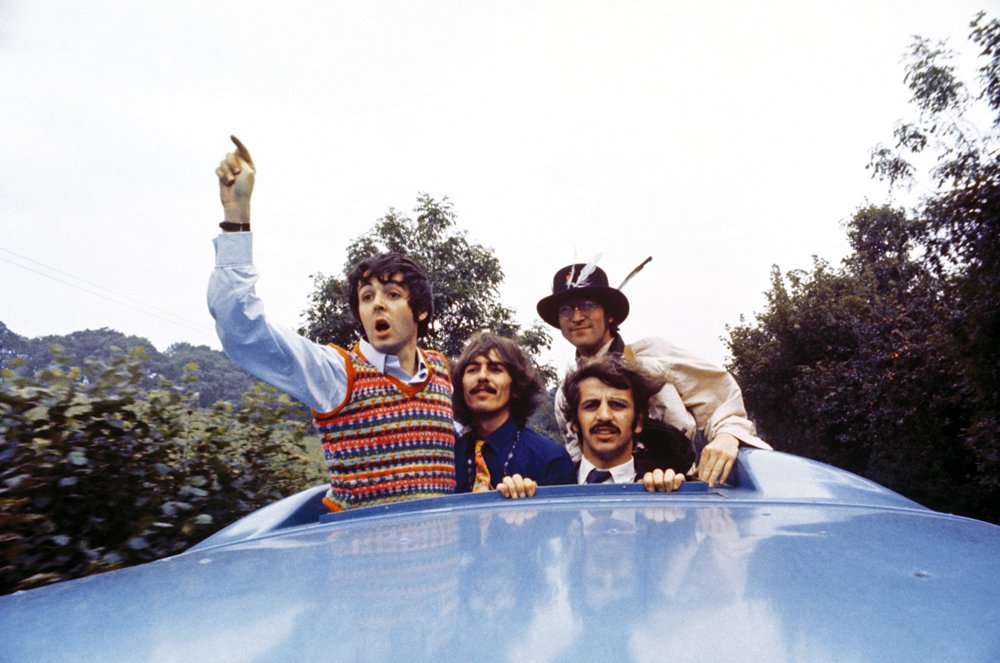
The sonic exploration undertaken in “Magical Mystery Tour” is nothing short of a kaleidoscopic journey through sound, innovation, and genre-blending that defies the confines of traditional pop and rock music. The production quality of the album, under the meticulous direction of George Martin and the creative genius of The Beatles themselves, is characterized by its clarity and richness, despite the complex layering of sounds and effects. This clarity serves the album’s themes by creating a vivid, almost tangible auditory experience that transports listeners into the whimsical, psychedelic world The Beatles sought to create.
The album’s production utilizes cutting-edge studio techniques of the time, including innovative use of stereo sound, tape loops, and varispeed recording. Such techniques not only contribute to the album’s immersive soundscape but also reinforce its themes of exploration and discovery. The clarity of production allows each experiment in sound—the lush orchestration, the intricate harmonies, and the unexpected shifts in tempo and key—to shine, while still maintaining a cohesive sound that binds the album together.
Musical Arrangements
Musical arrangements on “Magical Mystery Tour” are notably adventurous. From the orchestral sweeps of “I Am the Walrus” to the vaudevillian charm of “Your Mother Should Know,” each track offers a unique auditory tableau. Particularly innovative is the integration of classical instruments with rock elements, as exemplified in “Strawberry Fields Forever,” where mellotron flutes, cellos, and brass create a dreamlike atmosphere that defies easy categorization. The use of tape loops and sampled sounds in “I Am the Walrus” further pushes the boundaries of traditional song structure and instrumentation, creating a sonic collage that is as bewildering as it is captivating.
Genre Elements
Genre elements within the album are diverse and fluid, touching upon psychedelic rock, pop, baroque pop, and even elements of traditional English music hall. This genre-blending is not haphazard but serves the album’s exploration of varied musical landscapes. “Magical Mystery Tour” traverses from the experimental psychedelia of “Blue Jay Way” to the sunny, straightforward pop of “Penny Lane,” showcasing The Beatles’ versatility and refusal to be pinned down to a single musical identity. This eclectic approach not only highlights their mastery across genres but also mirrors the album’s thematic journey through different realms of perception and experience.
Lyrical Analysis
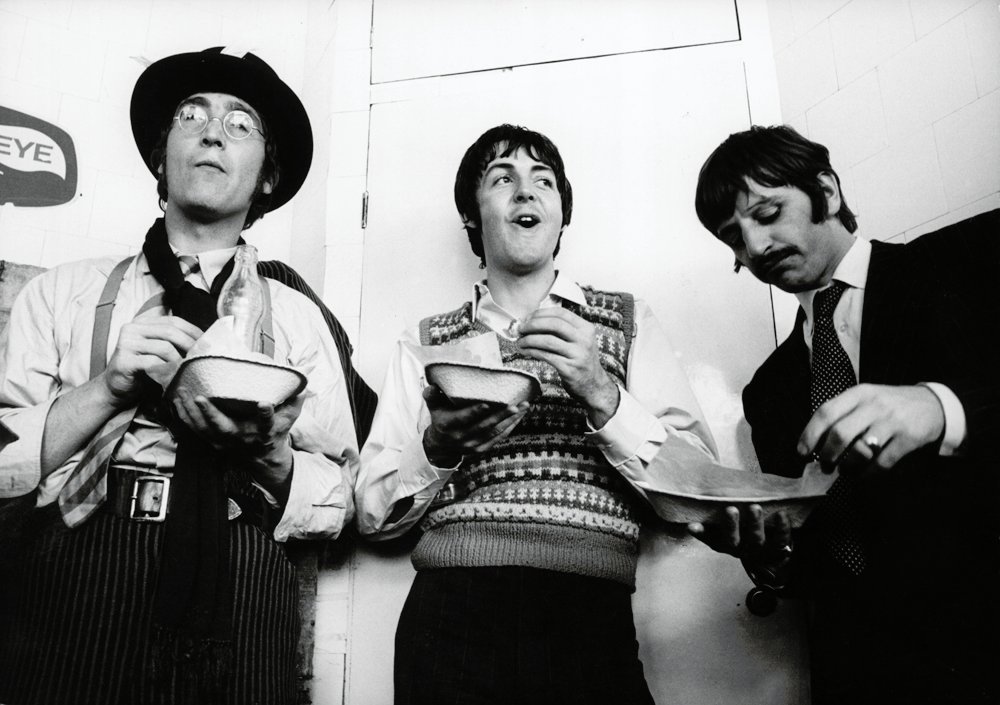
The lyrical landscape of “Magical Mystery Tour” is as varied and vivid as its musical counterpart, weaving through themes of fantasy, existential contemplation, and a poignant longing for connection and understanding. The album stands as a lyrical tapestry rich in psychedelic imagery, whimsical storytelling, and introspective depth, reflecting the era’s social and cultural upheavals while also delving into the personal realms of The Beatles themselves.
Central Themes
Central to the album is the theme of escapism, embodied in the title track’s invitation to a journey away from the mundane towards the magical and unknown. This theme of seeking beyond the visible world recurs in tracks like “Strawberry Fields Forever,” where Lennon muses on the fluidity of reality and perception, and “I Am the Walrus,” with its surreal, stream-of-consciousness lyrics that challenge the listener to find meaning amidst the absurdity. The lyrics across the album are imbued with a sense of exploration, both external and internal, urging listeners to embark on their own journey of discovery.
Lyrical Depth
The lyrical depth of “Magical Mystery Tour” is notable for its complexity and poetic nature. Lennon’s “Strawberry Fields Forever” exemplifies this depth, blending autobiographical reflections with psychedelic imagery to express a sense of alienation and the search for authenticity. McCartney’s “Penny Lane,” on the other hand, captures the nostalgia and warmth of everyday life through vivid, cinematic descriptions. The lyrics throughout the album oscillate between the abstract and the narrative, offering a rich tapestry of imagery and emotion that invites multiple interpretations.
Emotional Impact
Emotionally, the album traverses a broad spectrum, from the joy and exuberance of “Magical Mystery Tour” and “Your Mother Should Know” to the melancholic introspection of “Fool on the Hill” and the existential musings of “I Am the Walrus.” The emotional impact of these lyrics is profound, evoking a sense of wonder, introspection, and at times, dissonance. The listener is invited not just to hear the music, but to feel it, to engage with the complexities of human experience that the lyrics so vividly portray.
Moreover, the album’s emotional resonance is heightened by its exploration of love and unity, themes that are both timeless and reflective of the era’s idealism. “All You Need Is Love,” for instance, serves as a simple yet profound anthem for peace and solidarity, echoing the album’s overarching message of connection and understanding.
Cohesion and Flow
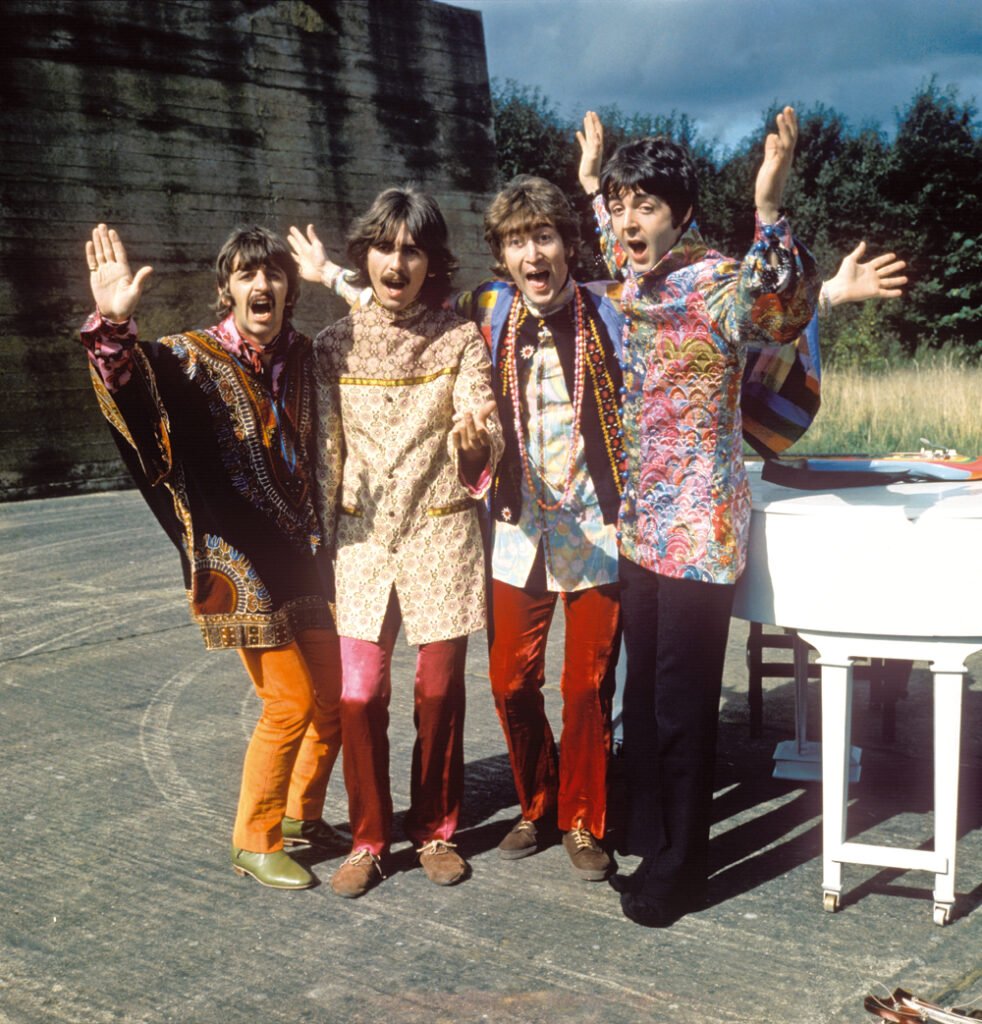
The “Magical Mystery Tour” album, in its adventurous spirit and experimental soundscapes, presents a fascinating study of cohesion and flow, albeit through a less conventional lens. The Beatles, in this auditory voyage, manage not only to maintain thematic consistency but also to weave a tapestry of tracks that, while distinct in their narratives and emotions, contribute to a larger, more intricate mosaic of sound and meaning.
Track progression throughout the album showcases The Beatles’ knack for sequencing that enhances the listener’s experience, moving seamlessly from the buoyant invitation of the title track through the psychedelic odyssey of “The Fool on the Hill,” into the nostalgic lanes of “Penny Lane” and “Strawberry Fields Forever,” and culminating in the universal anthem “All You Need Is Love.” While at first glance, the transitions between such varied themes and sounds may appear abrupt, a deeper listening reveals a carefully crafted emotional and narrative arc that guides the listener through a spectrum of human experience, from introspection to jubilation.
Thematic Consistency
Thematic consistency is achieved not through uniformity but through the exploration of a central set of ideas from multiple angles. The album’s overarching themes of exploration, both of the outer world and the inner psyche, as well as love, connection, and the desire for meaning, are revisited through differing musical and lyrical lenses across the tracks. This thematic exploration is bound together by The Beatles’ innovative use of sound, which serves as a constant thread pulling the listener through the album’s diverse musical landscapes.
Indeed, the album does feature shifts that might seem jarring on a surface level—moving from the avant-garde, cacophonous “I Am the Walrus,” to the simplistic, music hall charm of “Your Mother Should Know,” for instance. However, these shifts rather than detracting from the album’s cohesion, add depth to its narrative, reflecting the complexity of the journey The Beatles are undertaking. Each track, with its distinct mood and style, acts as a chapter in a larger story, contributing to the album’s exploration of the myriad ways in which music can evoke emotion, provoke thought, and tell stories.
The emotional progression of the album is subtle yet profound, beginning with an air of whimsy and adventure, delving into introspection and existential wonder, and ultimately affirming the universal message of love and unity. This progression mirrors the listener’s journey through the “Magical Mystery Tour,” from the initial call to adventure to a deeper exploration of self and society, culminating in an uplifting reminder of the fundamental human connection.
Standout Tracks and Moments
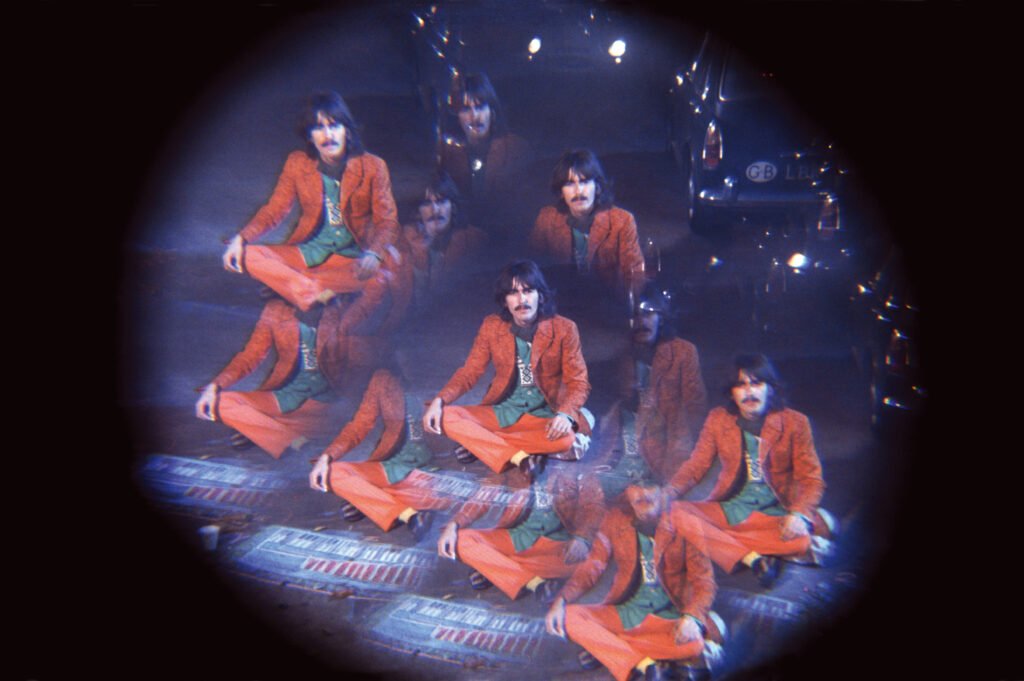
Within the vibrant tapestry of “Magical Mystery Tour,” certain tracks emerge with a luminance that not only underscores The Beatles’ artistic innovation but also solidifies their emotional resonance and lasting impact on music history. These standout tracks and moments serve as pillars that uphold the album’s legacy, each offering a unique lens through which to view The Beatles’ multifaceted exploration of music and emotion.
Key Tracks
“Strawberry Fields Forever” stands as a monumental achievement in both lyrical depth and sonic experimentation. This track, with its haunting mellotron intro, complex tape loops, and ethereal transitions, showcases The Beatles’ prowess in pushing the boundaries of studio recording. Its lyrical exploration of nostalgia, identity, and the blurred lines between reality and imagination encapsulates the album’s thematic ambitions. The moment when Lennon’s voice melds with the swirling, pitch-shifted instrumentation, declaring, “No one I think is in my tree,” serves as a poignant reminder of the song’s introspective core.
“I Am the Walrus” is another track that dazzles with its avant-garde approach and lyrical audacity. Its amalgamation of orchestral arrangements, electronic effects, and a chorus of cryptic, stream-of-consciousness lyrics marks a bold departure from conventional songwriting. The track’s use of a radio broadcast of Shakespeare’s “King Lear” in its closing moments is a stroke of genius, blurring the lines between the song and external reality, thus amplifying its surreal atmosphere.
“Penny Lane” shines brightly with its vivid, narrative-driven lyrics and innovative musical arrangements. McCartney’s detailed storytelling, paired with the bright, chiming tones of the piano and the distinctive use of a piccolo trumpet solo, captures the essence of nostalgia in a way that feels both personal and universal. The moment the trumpet enters, elevating the song’s bridge, is a sublime instance of musical storytelling that perfectly captures the warmth and charm of everyday life.
Memorable Moments
A memorable moment that captures the essence of the album’s experimental spirit is found in “Blue Jay Way”. The track’s use of droning organ, reversed tape effects, and ethereal vocals creates an atmosphere of disorienting mystique. Harrison’s repeated plea, “Don’t be long,” against the backdrop of swirling, phasing sounds, effectively conveys a sense of eerie anticipation and underscores the album’s theme of the mystical journey.
Lastly, “All You Need Is Love” serves as a unifying anthem that encapsulates the album’s overarching message. Its simple yet profound lyrical assertion, set against a backdrop of a live, global broadcast, highlights the power of music as a medium for connection and unity. The moment the song transitions from its verse into the chorus, with the world joining in on the declaration that “All you need is love,” stands as a powerful testament to the song’s, and indeed the album’s, enduring message of hope and togetherness.
These standout tracks and moments are emblematic of “Magical Mystery Tour’s” artistic and emotional depth. They exemplify The Beatles’ ability to marry complex musical innovation with poignant, reflective lyricism, creating an album that is not only a cornerstone of their discography but also a milestone in the evolution of popular music.
Artistic Contribution and Innovation
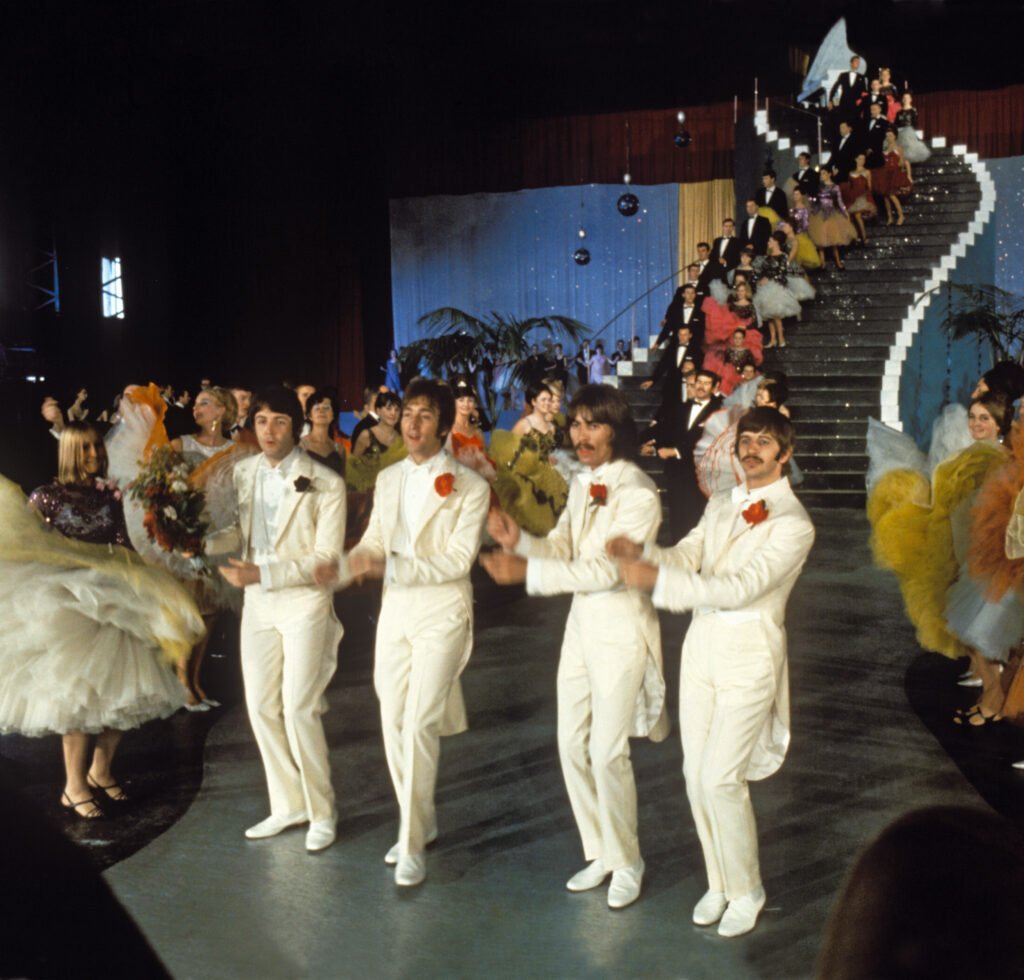
“Magical Mystery Tour,” since its inception, has occupied a unique and indelible place within not just the psychedelic genre, but the music industry at large. Its release amidst the zenith of the psychedelic era marked not a mere participation in the trends of the time but a definitive expansion of what popular music could embody and express. This album stands as a beacon of innovation, pushing the boundaries of artistic exploration far beyond the established norms of its era.
Genre Blending
The album’s place within its genre is paradoxical; it both epitomizes the psychedelic rock genre and transcends it, incorporating elements of baroque pop, experimental music, and traditional English music hall sounds. This genre-fluid approach allowed The Beatles to explore a vast emotional and thematic range, from the introspective to the whimsical, the mundane to the mystical. By refusing to adhere to a single genre, “Magical Mystery Tour” helped redefine what an album could be—a cohesive collection of varied experiences and sounds rather than a uniform set of tracks.
Production techniques
One of the most innovative aspects of the album lies in its production techniques. Under the guidance of George Martin, The Beatles employed a range of groundbreaking studio techniques, including tape loops, reversed audio, varispeed recording, and the Mellotron, to create sounds that had never been heard before in popular music. These techniques, particularly the use of tape loops in “I Am the Walrus” and the Mellotron in “Strawberry Fields Forever,” allowed the band to create sonic landscapes that were rich, complex, and utterly captivating. The production of “Magical Mystery Tour” was not just about recording songs; it was about crafting immersive auditory experiences that transported listeners to new realms of imagination.
Thematic Exploration
Furthermore, the thematic exploration of the album—touching on issues of identity, perception, and the search for meaning—represented a significant departure from the simpler love songs that had characterized much of popular music until then. The Beatles dared to infuse their music with a philosophical depth and a narrative complexity that challenged their audience to think, feel, and question. This thematic ambition, combined with the album’s musical innovations, contributed to a shift in popular music towards a more introspective and experimental direction.
“Magical Mystery Tour” also broke new ground in the concept of the album as an art form. At a time when singles dominated the charts, this album—like its predecessor, “Sgt. Pepper’s Lonely Hearts Club Band”—championed the idea of the album as a cohesive artistic statement, where songs could complement and enhance each other to create a unified work greater than the sum of its parts. This approach influenced countless artists and bands in the years to follow, elevating the album to a primary medium of artistic expression in popular music.
Closing Thoughts
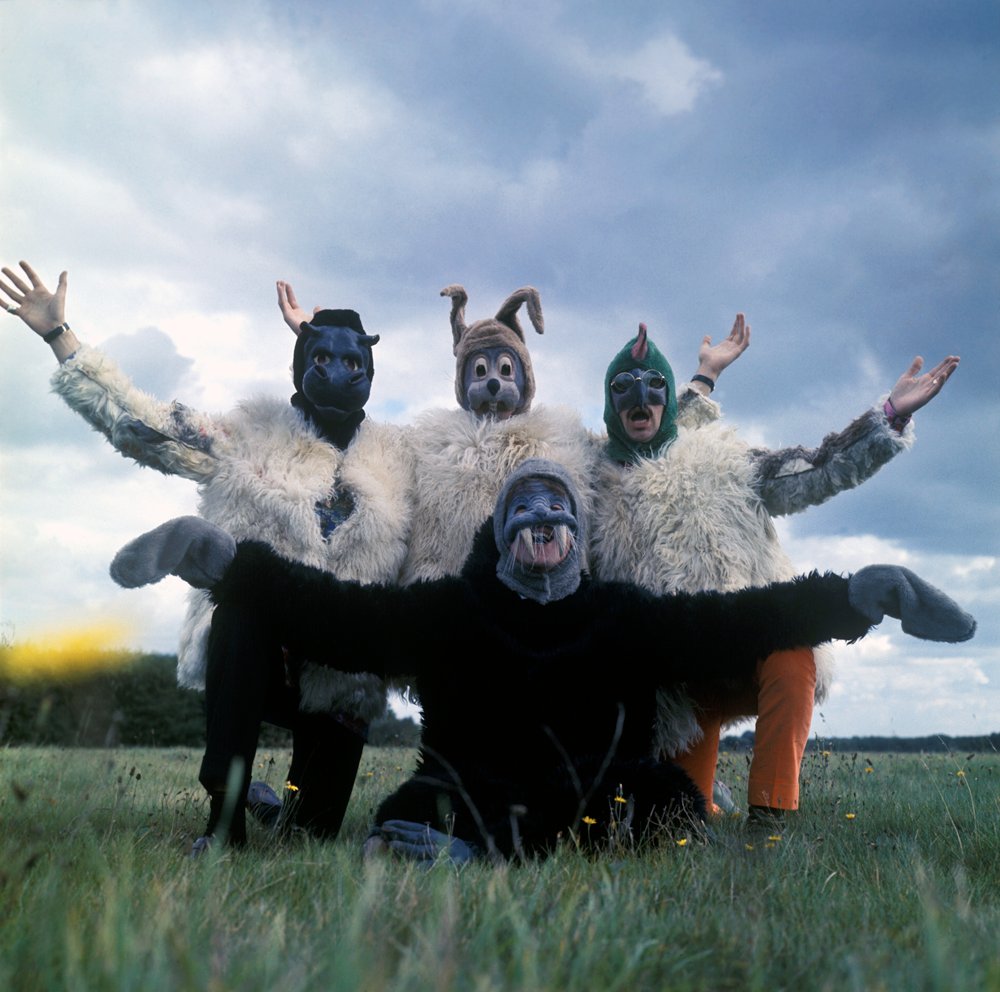
In concluding our exploration of The Beatles’ “Magical Mystery Tour,” it becomes evident that this album is a profound piece of musical artistry, marked by its bold experimentation, thematic depth, and innovative production techniques. Its strengths lie in its ability to transport listeners to a myriad of sonic landscapes, each track offering a new dimension of auditory and emotional experience. The album excels in its genre-blending approach, seamlessly weaving together elements of psychedelic rock, pop, and classical music, among others, to create a sound that is at once familiar and wholly unprecedented.
Strengths & Weaknesses
The production quality, under the expert guidance of George Martin, showcases The Beatles’ adventurous spirit through the use of groundbreaking studio techniques that have since become seminal in the field of music production. Thematically, “Magical Mystery Tour” embarks on a journey through existential reflection, whimsical escapades, and a heartfelt plea for love and unity, presenting a rich tapestry of human experience that remains relatable decades after its release.
However, the album is not without its weaknesses. Its experimental nature, while a hallmark of its innovation, can at times lead to a lack of cohesion across tracks, making the album’s overall narrative arc somewhat difficult to follow. This fragmented quality, though arguably part of its charm, may alienate listeners looking for a more straightforward musical journey. Additionally, the ambitious scope of its thematic exploration and the abstract nature of its lyrics might obscure its messages for those not steeped in the cultural and historical context of the late 1960s.
Despite these considerations, “Magical Mystery Tour” holds a significant place in The Beatles’ discography and the broader landscape of popular music. It represents a pivotal moment in their career, a testament to their artistic evolution from pop icons to pioneers of psychedelic and experimental music. This album not only challenged the conventions of the music industry but also expanded the possibilities of musical expression, influencing generations of artists and listeners alike.
Official Rating
Offering a rating of 7 out of 10 acknowledges these dual aspects of “Magical Mystery Tour”—its unparalleled innovation and artistic depth, alongside the challenges it presents in accessibility and cohesion. This rating reflects a recognition of the album’s monumental contributions to music and culture, while also considering its limitations in offering a unified listening experience.
